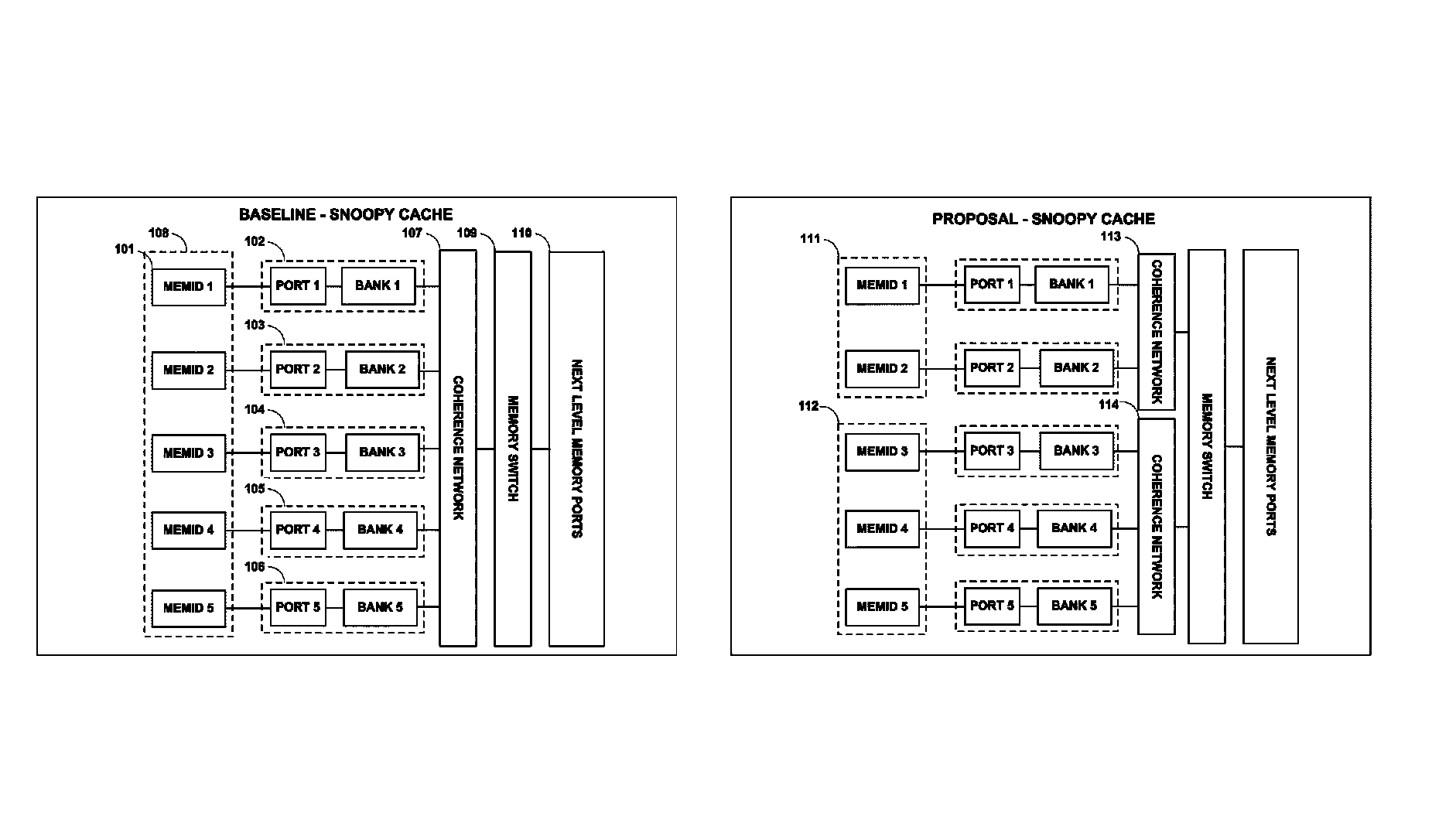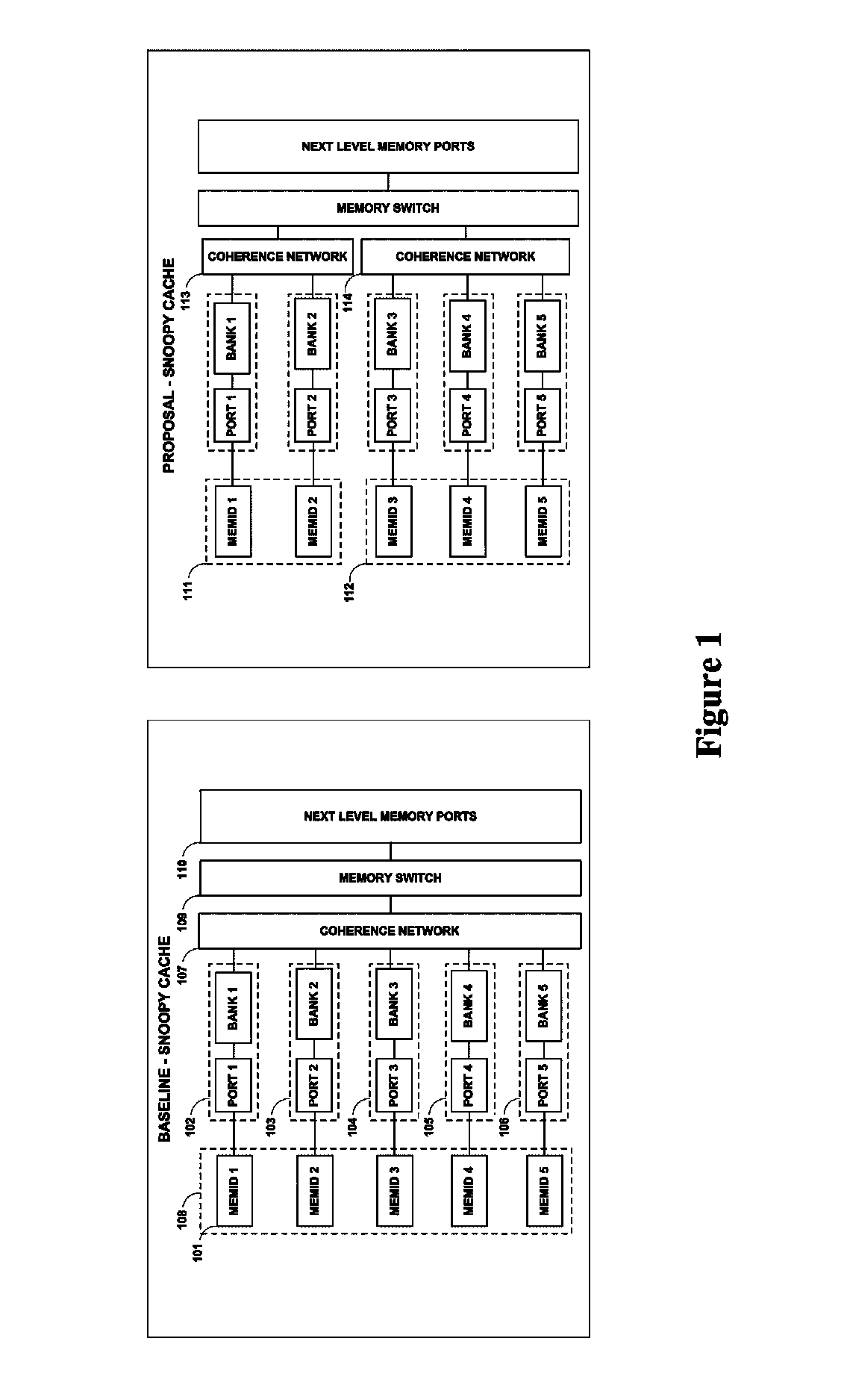Storage unsharing
a storage and memory technology, applied in the field of partitioning memory, can solve the problems of large memory scalability problems, memory system performance cannot scale as well as the processing elements, and large memory access latencies, etc., to achieve the effect of reducing the average number of ports per memory, reducing the number of ports, and reducing the number of cache interconnection networks
- Summary
- Abstract
- Description
- Claims
- Application Information
AI Technical Summary
Benefits of technology
Problems solved by technology
Method used
Image
Examples
example
[0205]As a comprehensive example to illustrate the operation of the invention, consider the following program fragment that corresponds to a matrix multiply-add operation C=C+A*B. The three N×N matrices A,B,C in this code are assumed to be laid out in Fortran style column-major order. We will first perform maximal storage unsharing.
[0206]
/ / Original code:for(i=0 to N−1) for(j=0 to N−1) load r3 = MEM[ C[i,j]] for(k=0 to N−1) load r1 = MEM[ A[i,k]] load r2 = MEM[ B[k,j]] mul r4 = r1 * r2 add r3 = r3 + r4 end store MEM[ C[i,j]] = r3 endend
[0207]FIG. 7 shows the memory hierarchy of matrix multiply-add as a result of recursive storage unsharing applied at different scopes (701). Before applying storage unsharing, all memory instructions access a single memory that contains all three of the A, B, and C matrices (702). After applying storage unsharing at the procedure scope, accesses to the three matrices are detected to be independent and they are separated, in order to use the...
PUM
 Login to View More
Login to View More Abstract
Description
Claims
Application Information
 Login to View More
Login to View More - R&D
- Intellectual Property
- Life Sciences
- Materials
- Tech Scout
- Unparalleled Data Quality
- Higher Quality Content
- 60% Fewer Hallucinations
Browse by: Latest US Patents, China's latest patents, Technical Efficacy Thesaurus, Application Domain, Technology Topic, Popular Technical Reports.
© 2025 PatSnap. All rights reserved.Legal|Privacy policy|Modern Slavery Act Transparency Statement|Sitemap|About US| Contact US: help@patsnap.com



